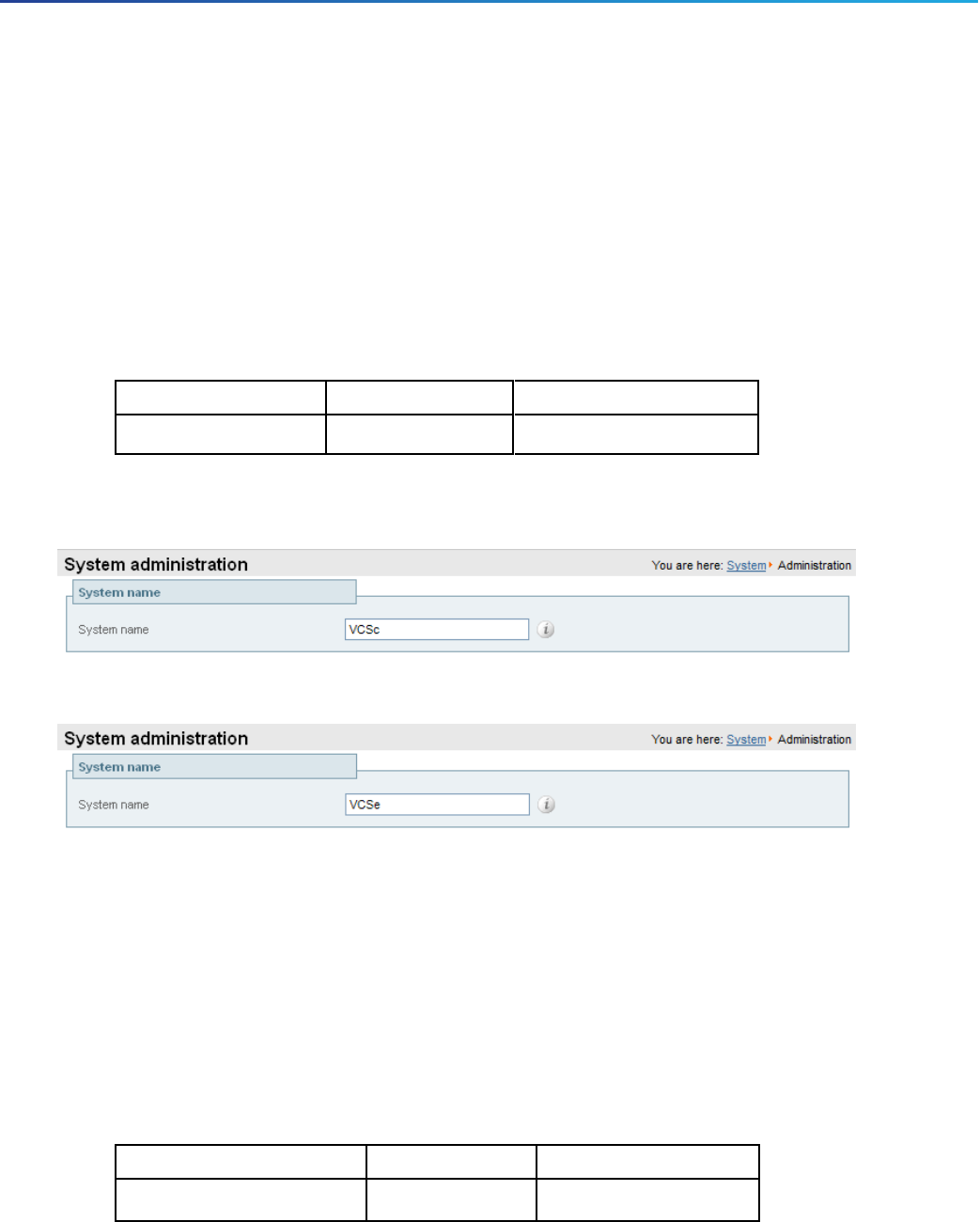Manual
Table Of Contents
- Preface
- Introduction
- Process Summary
- Prerequisites
- Run the Service Setup Wizard
- VCS System Configuration
- Routing Configuration
- Pre-search Transforms
- Search Rules
- Task 8: Configuring Transforms
- Task 9: Configuring Local Zone Search Rules
- Task 10: Configuring the Traversal Zone
- Neighboring Between VCS Clusters
- Task 11: Configuring Traversal Zone Search Rules
- Task 12: Configuring the DNS Zone
- Task 13: Configuring DNS Zone Search Rules
- Task 14: Configuring External (Unknown) IP Address Routing
- Endpoint Registration
- System Checks
- Maintenance Routine
- Optional Configuration Tasks
- Appendix 1: Configuration Details
- Appendix 2: DNS Records
- Appendix 3: Firewall and NAT Settings
- Appendix 4: Advanced Network Deployments
- Obtaining Documentation and Submitting a Service Request
- Cisco Legal Information
- Cisco Trademark

VCS System Configuration
Task 3: Setting the System Name
The System name defines the name of the VCS. It appears in various places in the web interface and is also used by
Cisco TMS. We recommend using a name that lets you easily and uniquely identify the VCS.
To configure the System name:
1. Go to System > Administration.
2. Configure the System name as follows:
VCS Control VCS Expressway
System name Enter VCSc Enter VCSe
3. Click Save.
Figure 4 VCS Control
Figure 5 VCS Expressway
Task 4: Configuring DNS
System Host Name
The System host name defines the DNS hostname that this system is known by. Note that this is not the fully-
qualified domain name, just the host label portion.
Note that <System host name>.<Domain name> = FQDN of this VCS.
To configure the System host name:
1. Go to System > DNS.
2. Configure the System host name as follows:
VCS Control VCS Expressway
System host name
Enter vcsc Enter vcse
3. Click Save.
19
Cisco VCS Expressway and VCS Control - Basic Configuration Deployment Guide
VCS System Configuration










